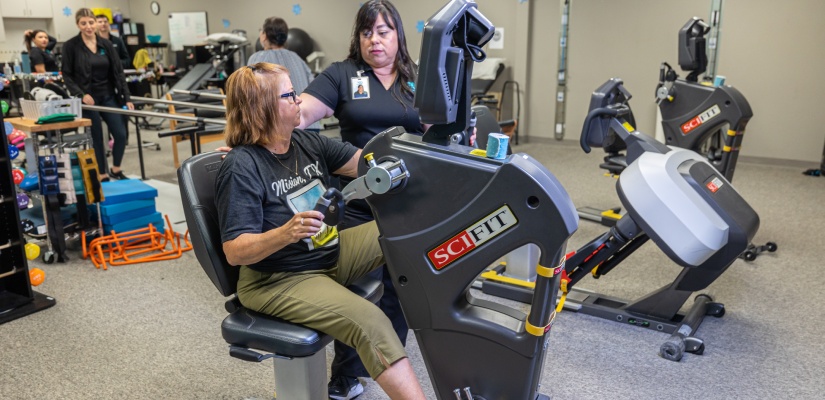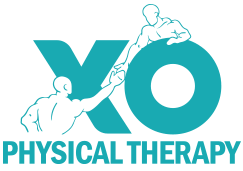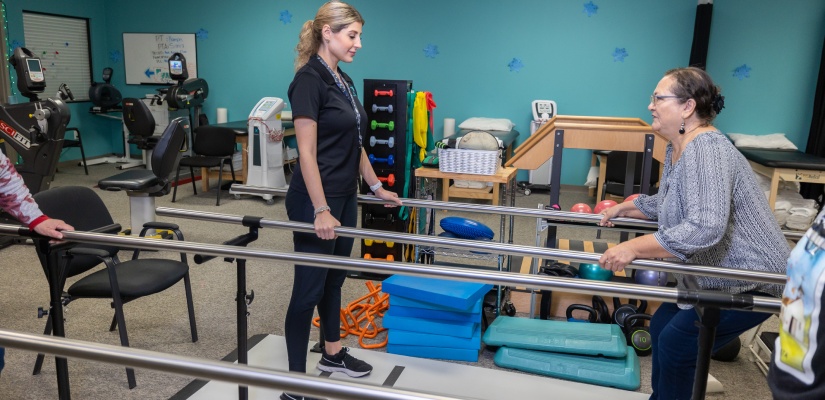Post-Hernia Surgery Recovery: Tips for Safe Healing

Recovering from hernia surgery is a crucial phase that can significantly impact your overall health and well-being. Even though surgery is designed to strengthen and heal, it can also temporarily upend your life and your body. This statement underscores the importance of approaching your recovery with care and diligence.
The journey to full recovery after hernia surgery typically spans several weeks to months, depending on various factors such as the type of hernia, surgical approach, and individual health conditions. While some patients may return home the same day or the day after surgery, it’s essential to understand that this marks only the beginning of your post-hernia surgery recovery process.
Post Hernia Surgery Recovery Timeline and Phases

Your recovery journey can be broadly divided into three phases:
Immediate Post-Operative Phase (1–3 Days)
- Focus: Pain management and gradual mobilization.
- Key Activities:
- Rest and follow prescribed pain medication schedules.
- Begin light, supervised movements (e.g., walking short distances or gentle stretching, as advised by your healthcare provider).
- Monitor surgical site for any signs of complications.
Early Recovery Phase (1–4 Weeks)
- Focus: Gradually increase activities while avoiding strenuous exercises.
- Key Activities:
- Engage in light physical activity (e.g., walking, basic range-of-motion exercises).
- Avoid heavy lifting or high-impact activities.
- Attend follow-up appointments for progress checks and adjust activity levels based on medical advice.
Late Recovery Phase (1–3 Months)
- Focus: Slowly reintroduce more demanding activities under medical guidance.
- Key Activities:
- Gradually increase strength and endurance through moderate exercise (e.g., swimming, cycling, or resistance training as approved).
- Reintroduce work or recreational activities, ensuring they align with your recovery progress.
- Continue monitoring for pain or discomfort and consult your provider for further recommendations.
It’s crucial to note that these timelines are general guidelines, and your specific recovery may vary. Always follow your surgeon’s personalized instructions for the best outcomes.
The Role of Physical Therapy
Physical therapy plays a vital role in enhancing your recovery after hernia surgery. It helps in:
- Preparing your body before surgery (prehabilitation).
- Guiding safe mobilization immediately after surgery.
- Strengthening core muscles during the recovery period.
- Preventing complications such as blood clots or respiratory issues.
- Facilitating a faster return to normal activities.Working with a physical therapist can provide tailored exercises and techniques to support your healing process and improve your overall functionality.
Considerations for a Successful Recovery
To ensure a smooth and effective recovery, remember these key points:
1. Follow your doctor’s instructions meticulously.
2. Engage in early, gentle mobilization as recommended.
3. Maintain a balanced diet to support healing.
4. Gradually increase your activity levels.
5. Attend all follow-up appointments.
6. Be patient with your body’s healing process
Remember, every patient’s recovery journey is unique. By understanding the importance of careful recovery, adhering to the typical timeline, leveraging physical therapy, and keeping these key considerations in mind, you can set yourself up for a successful post-hernia surgery recovery. The following sections discuss specific aspects of your recovery, including exercises to avoid, dietary considerations, and tips for safe healing.
Exercises to Avoid After Hernia Surgery
For the first few weeks after surgery, it’s recommended to avoid the following high-impact exercises:
-
Lifting weights over 10kg (22 lbs)
-
Abdominal crunches or sit-ups
-
High-impact cardio (running, jumping, contact sports)
-
Heavy resistance training
-
Yoga poses that strain the core
These activities significantly stress your abdominal muscles and the surgical site, potentially interfering with healing.
While early mobilization is crucial for recovery, it’s equally important to understand which exercises should be avoided after hernia surgery. Immediately after surgery, your body is in a delicate state of healing. Strenuous activities or exercises that put excessive strain on the surgical area can lead to complications, such as reopening of the incision, increased pain, or even hernia recurrence. It’s crucial to give your body the time it needs to rebuild strength and stability in the affected area.
Guidelines for Gradually Reintroducing Physical Activity

Recovery is a gradual process, and it’s important to reintroduce physical activities in a controlled manner. Here’s a general timeline to consider:
- Immediately after surgery: Start with gentle walking as tolerated
- 2-3 weeks post-surgery: Low-impact exercises like swimming, cycling, or using an elliptical machine can be introduced
- 4-6 weeks post-surgery: Light core strengthening exercises may be started under guidance
- 4-6 months post-surgery: High-impact exercises can be gradually reintroduced
You should listen to your body; if you feel comfortable, you can do it. This personalized approach is crucial in ensuring a safe and effective recovery.
Consulting with Your Healthcare Provider
Before resuming any strenuous activities or exercise routines, it’s crucial to consult with your healthcare provider. They can provide personalized advice based on your surgery, overall health, and recovery progress. Your surgeon or physical therapist can guide you on when it’s safe to increase your activity levels and how to do so effectively.
By following these guidelines and working closely with your healthcare team, you can ensure a safe recovery and minimize the risk of complications or hernia recurrence. Remember, patience is key – giving your body the time it needs to heal properly will lead to better long-term outcomes.
Dietary Considerations: Foods to Avoid with a Hernia
While physical activity is crucial for recovery, your diet also plays a significant role in healing after hernia surgery. Understanding what to eat and what to avoid can help support your body’s healing mechanisms and prevent complications.
Good nutrition is essential for proper healing after any surgery, including hernia repair. There are no significant dietary restrictions after a hernia operation, which is reassuring news for many patients. It is still essential to note certain nutritional choices that can help you recover and prevent discomfort.
Foods That May Exacerbate Hernia Symptoms
While there are no universally prohibited foods after hernia surgery, some patients may find certain items cause discomfort or bloating. It’s advisable to limit or avoid:

- Fatty or fried foods: These can be harder to digest and may cause bloating.
- Spicy foods: Some patients find these irritating, especially during early recovery.
- Carbonated beverages can cause gas and bloating, potentially putting pressure on the surgical site.
- Large meals: Eating smaller, more frequent meals can help reduce strain on your digestive system.
Suggestions for a Balanced Diet to Support Healing
To support your recovery, focus on a balanced diet rich in nutrients. Patients are advised to take a very high protein diet because the tissues and muscles need to rebuild, and a good recovery of muscle strength after a hernia operation is essential. Consider incorporating these foods into your diet:
- Lean proteins: Chicken, fish, lean meats, eggs, and plant-based proteins like beans and lentils
- Fruits and vegetables: Rich in vitamins and antioxidants to support healing
- Whole grains: Provide energy and fiber
- Healthy fats: Found in foods like avocados, nuts, and olive oil, these support overall health
The Importance of Adequate Hydration and Fiber Intake

Proper hydration and fiber intake are crucial aspects of your post-surgery diet. Adequate fluid intake helps prevent constipation and supports overall healing. Aim to drink at least 8 glasses of water a day unless otherwise instructed by your doctor.
Fiber is equally essential, as it helps prevent constipation – a common concern after surgery. Straining during bowel movements can put pressure on your surgical site and potentially compromise healing. Include fiber-rich foods such as fruits, vegetables, whole grains, and legumes. If you’re having trouble getting enough fiber from your diet, consult your doctor about using a gentle fiber supplement.
Remember, while these dietary guidelines can support your recovery. , personalized advice from your healthcare team can help your recover from your surgery. Maintaining a balanced diet, staying hydrated, and listening to your body can support your healing process and pave the way for a smoother recovery.
Tips for Safe Healing and Preventing Future Hernias

After successfully navigating your dietary considerations post-hernia surgery, it’s crucial to focus on long-term strategies for safe healing and preventing future hernias. This holistic approach to recovery extends beyond your immediate post-operative period and sets the foundation for lasting health.
Strategies to Prevent Hernia Recurrence
One of the primary concerns after hernia surgery is the possibility of recurrence. To minimize this risk, gradually returning to normal activities is essential.
- Avoid lifting any object over 22 lbs (10 kg) for the first four weeks following surgery.
- Gradually increase your activity levels, listening to your body and following your surgeon’s advice.
- Maintaining a healthy weight is another crucial factor in preventing hernia recurrence. Excess weight puts additional pressure on your abdominal wall, potentially weakening the surgical repair. Work with your healthcare provider to establish a healthy weight goal and develop a plan to achieve and maintain it.
Incorporating Safe Exercises to Strengthen the Core
- Avoid strenuous exercises initially.
- Incorporate safe, low-impact activities.
- Start with short, gentle walks and gradually increase your distance and pace as comfort allows.
Once your surgeon gives the go-ahead, typically around 4-6 weeks post-surgery, you can begin incorporating light core-strengthening exercises. These might include gentle planks, pelvic tilts, and bridges. Always start slowly and stop if you experience any pain or discomfort.
Lifestyle Factors for Prevention
Confident and positive lifestyle choices can significantly impact recovery and long-term hernia prevention. These include avoiding excessive alcohol consumption and stopping smoking, as these activities impair wound healing and weaken connective tissue, increasing the risk of recurrence. Focus on a diet rich in lean proteins, fruits, vegetables, and whole grains to support your body’s healing process.
When to Seek Medical Advice
While following these tips can significantly aid your recovery and prevention efforts, knowing when to seek medical advice is crucial. Contact your healthcare provider immediately if you experience: – Severe or increasing pain – Signs of infection (redness, swelling, fever) – Nausea or vomiting – Inability to have a bowel movement or pass gas – Any unusual symptoms that concern you.
Remember, your recovery is gradual, and everyone’s journey is unique. By following these tips for safe healing and prevention, you’re taking proactive steps toward a successful recovery and reducing the risk of future hernias.
RGV Physical Therapy
The expert team at XO Physical Therapy can provide personalized care to help you regain strength and mobility. Whether through pre-surgical therapy to prepare your body or post-surgical rehabilitation to aid in recovery, we offer a range of services tailored to your needs. Our specialized programs include exercises to avoid post-surgery complications, ensuring a smoother and quicker return to normal activities. Start your journey to recover with us today and experience the benefits of expert physical therapy. Visit our website to learn more about our services and schedule your consultation: XO Physical Therapy.





